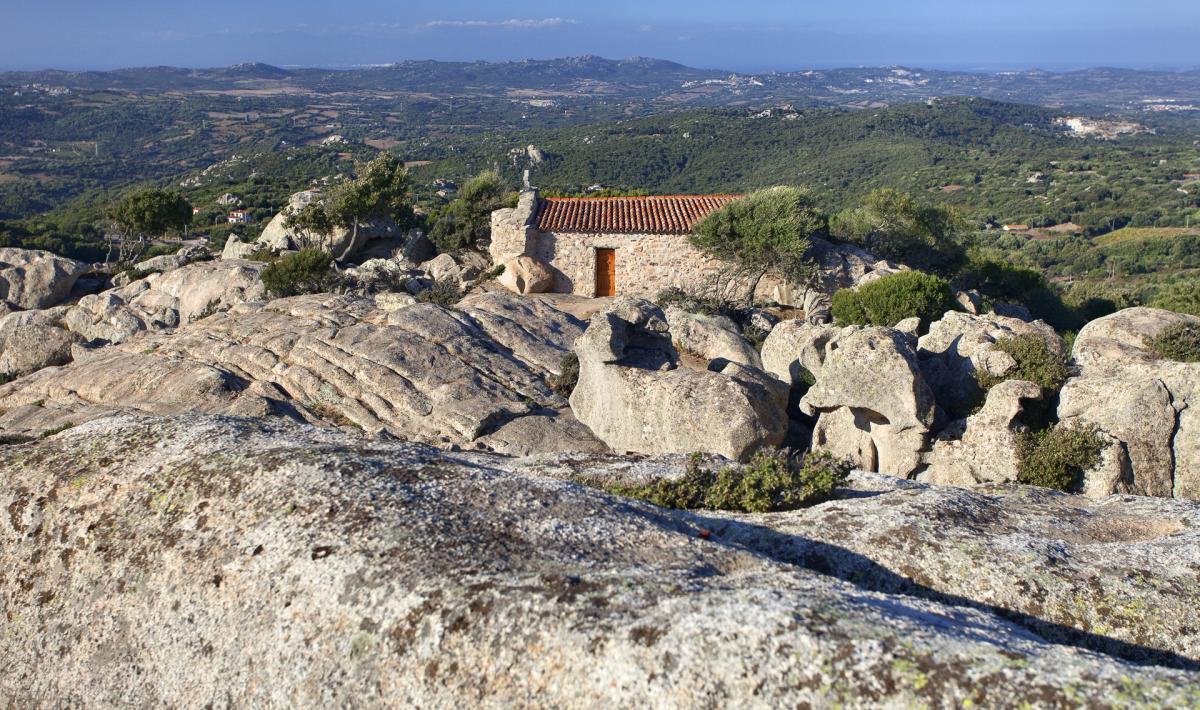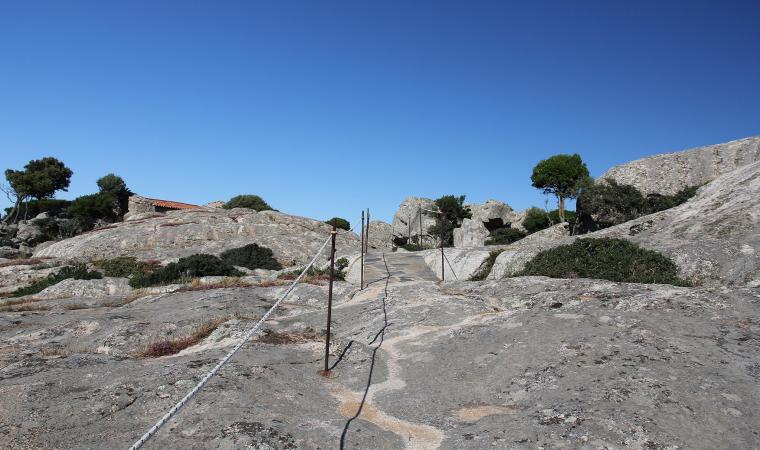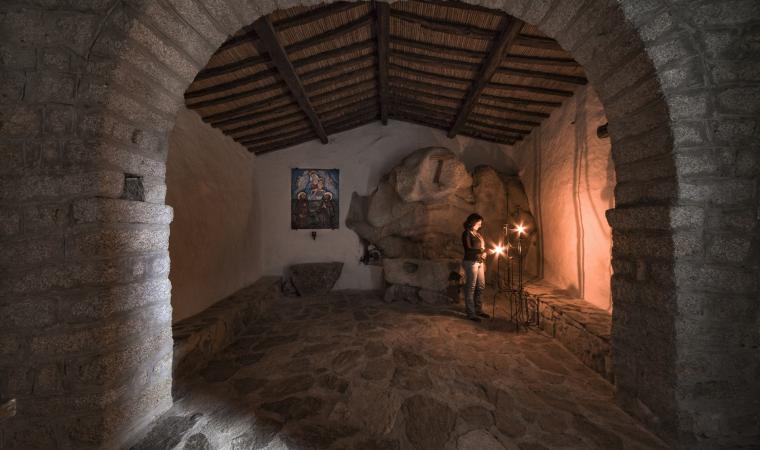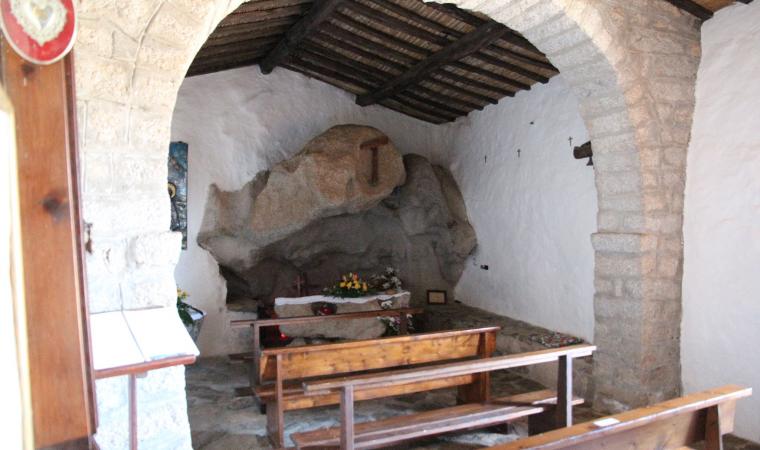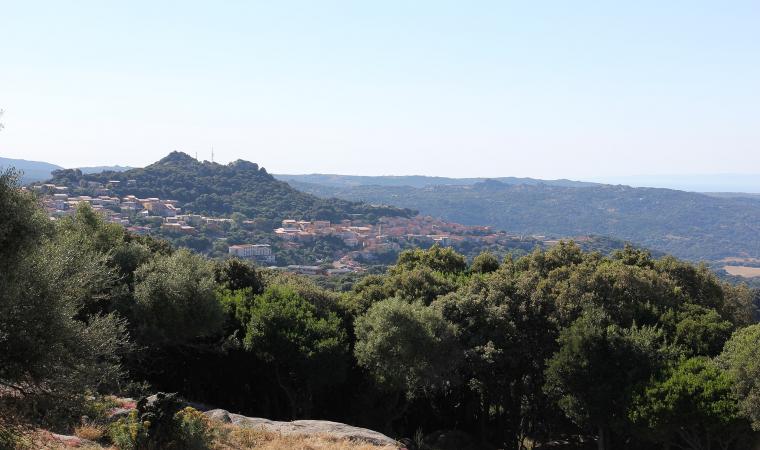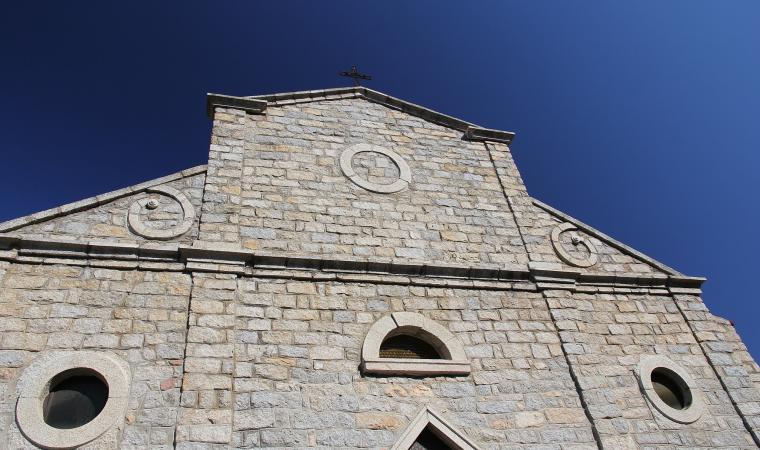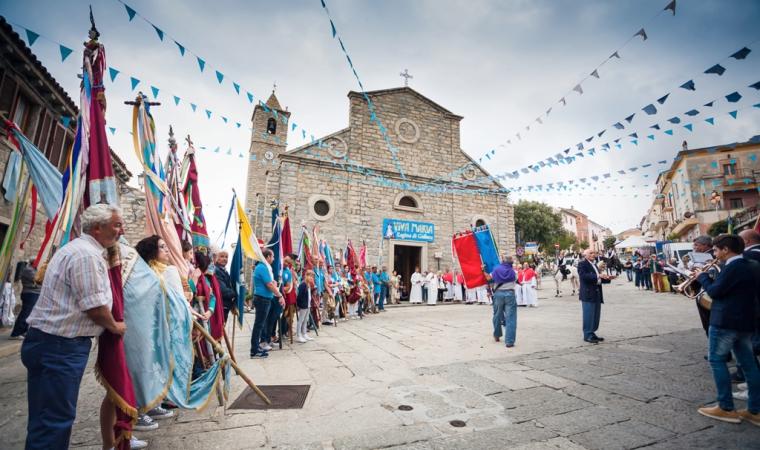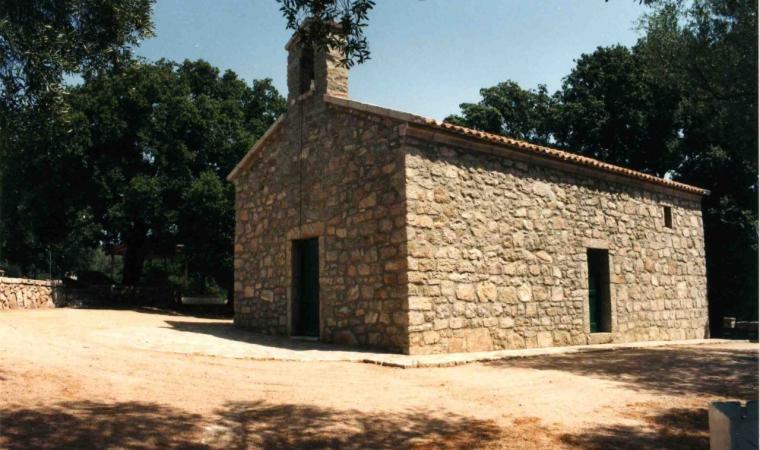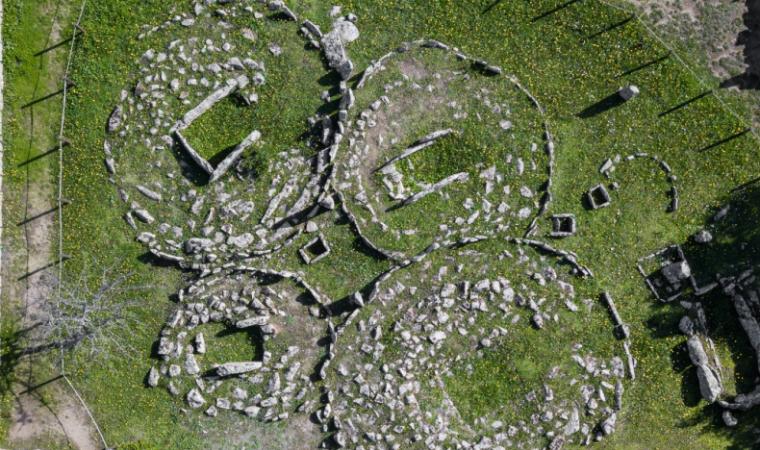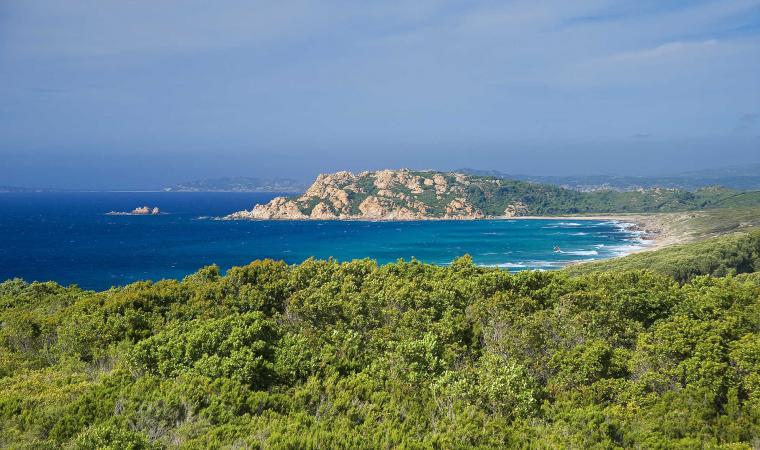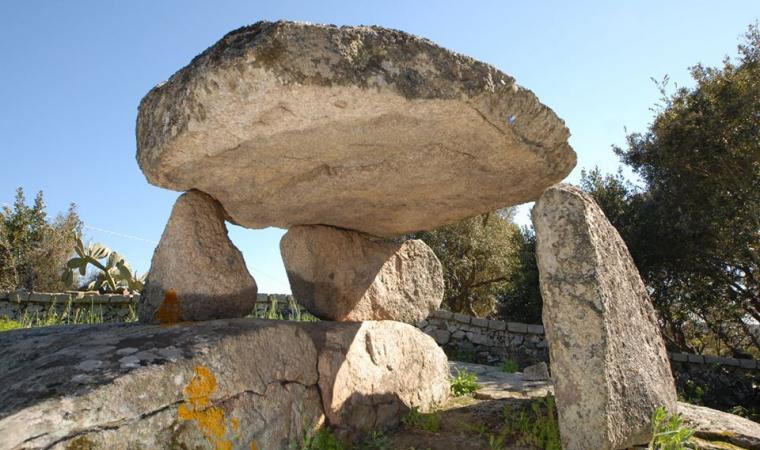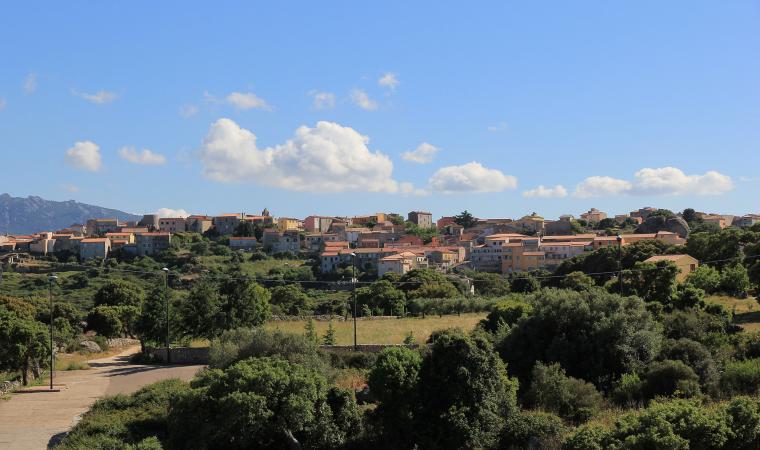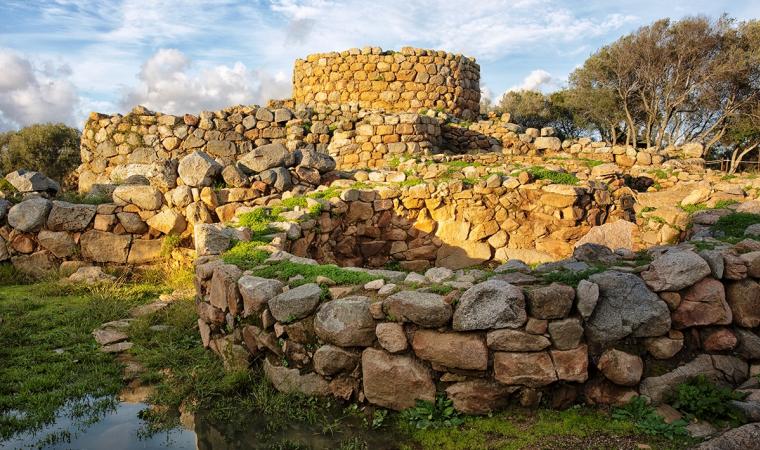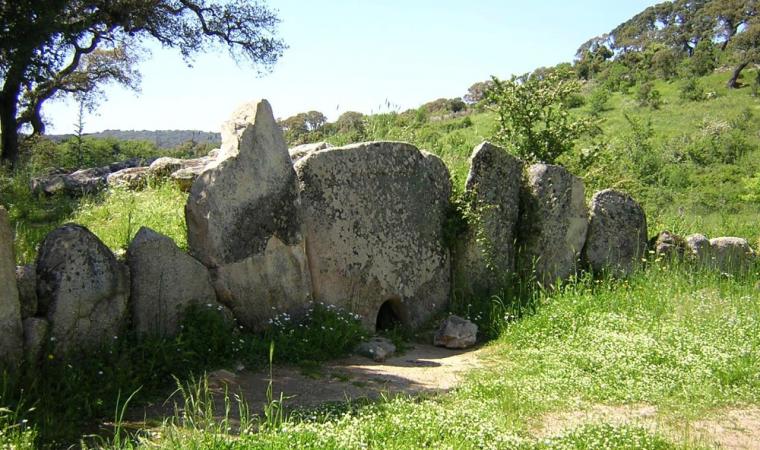Giant rocks sculpted by the wind surround and protect a place of calm and silence that has always been a destination for worshippers seeking an intense spiritual experience. Less than half an hour's drive away from the island's splendid north-eastern coastline but far from its bustling activity is a small church surrounded by granite outcrops and Mediterranean brush, in a perfect example of Franciscan simplicity. The sanctuary is located to the south of Luogosanto, not far from the town, and its position offers a panoramic view over the Strait of Bonifacio. Nearly a thousand years of history is wrapped up in folk tales about the two protagonists of the origins of this mysterious, austere place. The Eremo di San Trano owes its name to two Anchorite saints, Nicola and Trano, who chose to live their faith to the full in this hermitage, far from comfort and sin, between the 4th and 5th century.
The sanctuary was built in the 13th century and is inextricably linked to a legend about the two hermits. In 1227, the bodies of the two saints were allegedly found by two Franciscan friars during a pilgrimage, guided by a vision of the Madonna who showed them the place where Trano and Nicola lived and told them to build the church. The small, rural building was erected around the granite cave where the two hermit saints took refuge. The cave was enclosed by the walls of the church, and took the form of a natural apse, almost "protecting" the altar, made from a block of granite, also "sculpted" by nature. The rest of the building is also in a simple, typically Franciscan style. The interior has a single nave with a few pews and flooring made from granite slabs. The roof has a double slope, with exposed wooden beams visible from inside, covered by rushes and protected by tiles. Behind the altar and under the ancient cave, you can admire the statues of saints Nicola and Trano, who are celebrated in early June with an evening procession and a huge banquet the following day.
The hermitage is one of the most popular destinations for pilgrims to Luogosanto, the "holy town", which has no fewer than 22 sanctuaries. The town itself owes its foundation to the arrival of the Franciscans, who built a convent there. Today, the renovated building hosts the Nativity della beata Vergine Maria Museum, which displays votive offerings to the Madonna Bambina over the centuries, to whom the church of Nostra Signora di Luogosanto is dedicated. In the 18th century the church received the privilege of a holy door: since the 1970s, the door has been made of bronze, by Luca Luchetti, and is opened for pilgrims for one year every seven.

